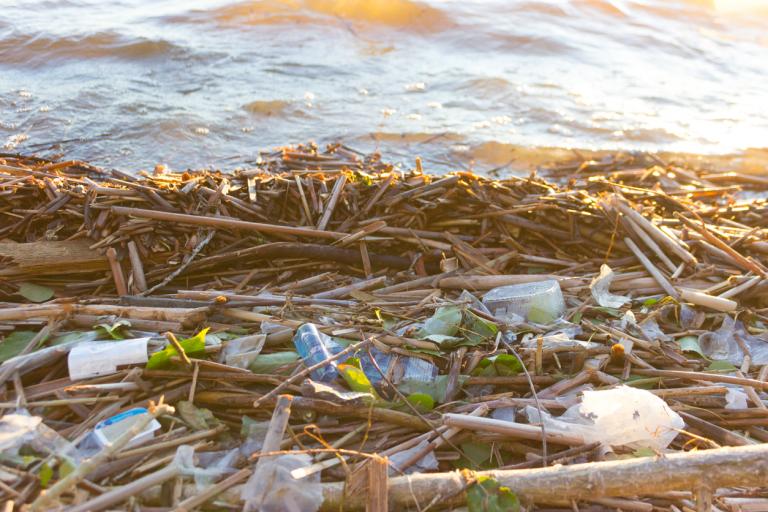This website uses cookies so that we can provide you with the best user experience possible. Cookie information is stored in your browser and performs functions such as recognising you when you return to our website and helping our team to understand which sections of the website you find most interesting and useful.

Ten times more plastic pollution has been dumped in the Atlantic Ocean than previously believed, according to a study published on Tuesday.
The paper is the first of its kind to measure "invisible" microplastics floating beneath the surface across the entire Atlantic, the researchers say, and had led them to conclude that plastic waste in the ocean has been grossly underestimated.
The study, published on Tuesday in the journal, Nature Communications, found that the mass of microplastics in the upper waters - the area from sea surface down to around 650 feet (200metres) - of the Atlantic is approximately 12-21 million tonnes.
The figure accounts only for three widely-used types of plastic of limited sizes, the researchers noted. However when you consider that previous estimates have put entire plastic waste in the Atlantic Ocean at 17 million tonnes, it would suggest that the estimates are way off.
The study's lead author, Dr Katsiaryna Pabortsava from the National Oceanography Centre (NOC) in the UK, said: "Previously, we couldn't balance the mass of floating plastic we observed with the mass we thought had entered the ocean since 1950. This is because earlier studies hadn't been measuring the concentrations of 'invisible' microplastic particles beneath the ocean surface. Our research is the first to have done this across the entire Atlantic, from the UK to the Falklands."
Microplastics are the tiny pieces - less than 0.2inches (5mm) - that break off plastic products as they swirl around in the ocean's waters. The particles endanger marine life and birds who often mistake them for food. Microplastics have invaded all corners of the planet - earlier studies have discovered particles in Antarctic sea ice for the first time and Arctic snow.
The NOC scientists collected seawater samples for the study during an Atlantic research trip in 2016. They zoned in on three plastics - polyethylene, polypropylene and polystyrene - which are widely used to make plastic bags, bottles, utensils and packaging, the items which are commonly found floating in seas and washed up on shores around the world.
Co-author, Professor Richard Lampitt, said: "if we assume that the concentration of microplastics we measured at around 200 metres deep is representative of that in the water mass to the seafloor below with an average depth of about 3000 metres, then the Atlantic Ocean might hold about 200 million tonnes of plastic litter in this limited polymer type and size category. This is much more than is thought to have been supplied."
He added: "In order to determine the dangers of plastic contamination to the environment and to humans we need good estimates of the amount and characteristics of this material, how it enters the ocean, how it degrades and then how toxic it is at these concentrations. This paper demonstrates that scientists have had a totally inadequate understanding of even the simplest of these factors, how much is there, and it would seem our estimates of how much is dumped into the ocean has been massively underestimated".
On Monday, a research team from Arizona State University announced their discovery of the presence of microplastics in human organs and tissues.
Using 47 human tissue samples taken from lungs, liver, spleen and kidneys, the researchers, Charles Rolsky and Varun Kelkar, discovered components of plastic contamination in every sample.
Mr Rolsky said: “You can find plastics contaminating the environment at virtually every location on the globe, and in a few short decades, we’ve gone from seeing plastic as a wonderful benefit to considering it a threat.
“There’s evidence that plastic is making its way into our bodies, but very few studies have looked for it there. And at this point, we don’t know whether this plastic is just a nuisance or whether it represents a human health hazard.”
The impact of plastic pollution on people is the subject of a growing number of studies. Last year, Dr Ivone Mirpuri, a hormone specialist, found that the chemicals used to make plastic may be triggering the rise in a range of diseases and conditions in people from reduced fertility to obesity, diabetes, cancer, heart attacks and neurological conditions, Environmental Journal reported.
There also have been studies on their impacts on other species, including evidence that microplastics can damage oyster fertility and negatively impact respiratory and reproductive systems in fish.



 Africana55 Radio
Africana55 Radio 

